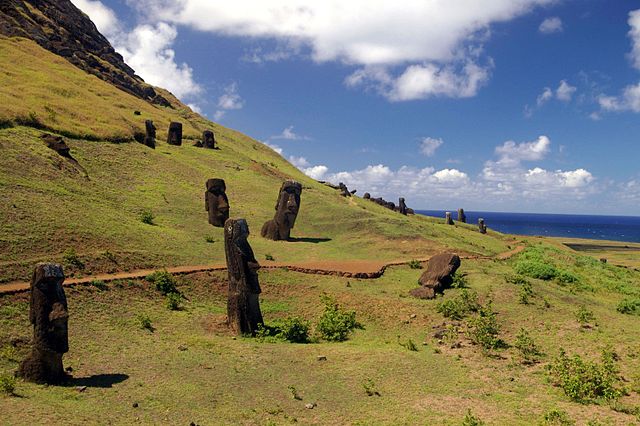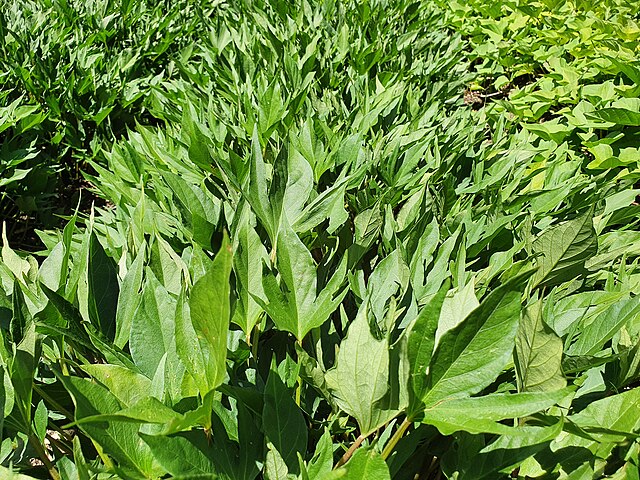Rongorongo is a system of glyphs discovered in the 19th century on Easter Island. It is not yet known whether rongorongo represents true writing or proto-writing. Numerous attempts at decipherment have been made, but none have been successful so far. Although some calendrical and what might prove to be genealogical information has been identified, none of these glyphs can actually be read. If the system is writing and proves to be an independent invention, it would be one of very few independent inventions of writing in human history.
Rongorongo
The Small Santiago Tablet (tablet G) clearly shows the fluting along which the glyphs were carved.
A closeup of the verso of the Small Santiago Tablet, showing parts of lines 3 (bottom) to 7 (top). The glyphs of lines 3, 5, and 7 are right-side up, while those of lines 4 and 6 are up-side down.
A photographic negative of one end of tablet B. The numbers are line numbers; Fin de 13 means "end of [line] 13".
Easter Island is an island and special territory of Chile in the southeastern Pacific Ocean, at the southeasternmost point of the Polynesian Triangle in Oceania. The island is most famous for its nearly 1,000 extant monumental statues, called moai, which were created by the early Rapa Nui people. In 1995, UNESCO named Easter Island a World Heritage Site, with much of the island protected within Rapa Nui National Park.
Outer slope of the Rano Raraku volcano, the quarry of the Moais with many uncompleted statues.
Moai at Rano Raraku, Easter Island
Traditional cultivars of sweet potato (kumara) were staple crops on Polynesian Rapa Nui
A View of the Monuments of Easter Island, Rapanui, c. 1775–1776 by William Hodges.




![A photographic negative of one end of tablet B. The numbers are line numbers; Fin de 13 means "end of [line] 13".](https://upload.wikimedia.org/wikipedia/commons/thumb/6/6a/Rongorongo_B-v_Aruku-Kurenga_%28end%29.jpg/494px-Rongorongo_B-v_Aruku-Kurenga_%28end%29.jpg)



